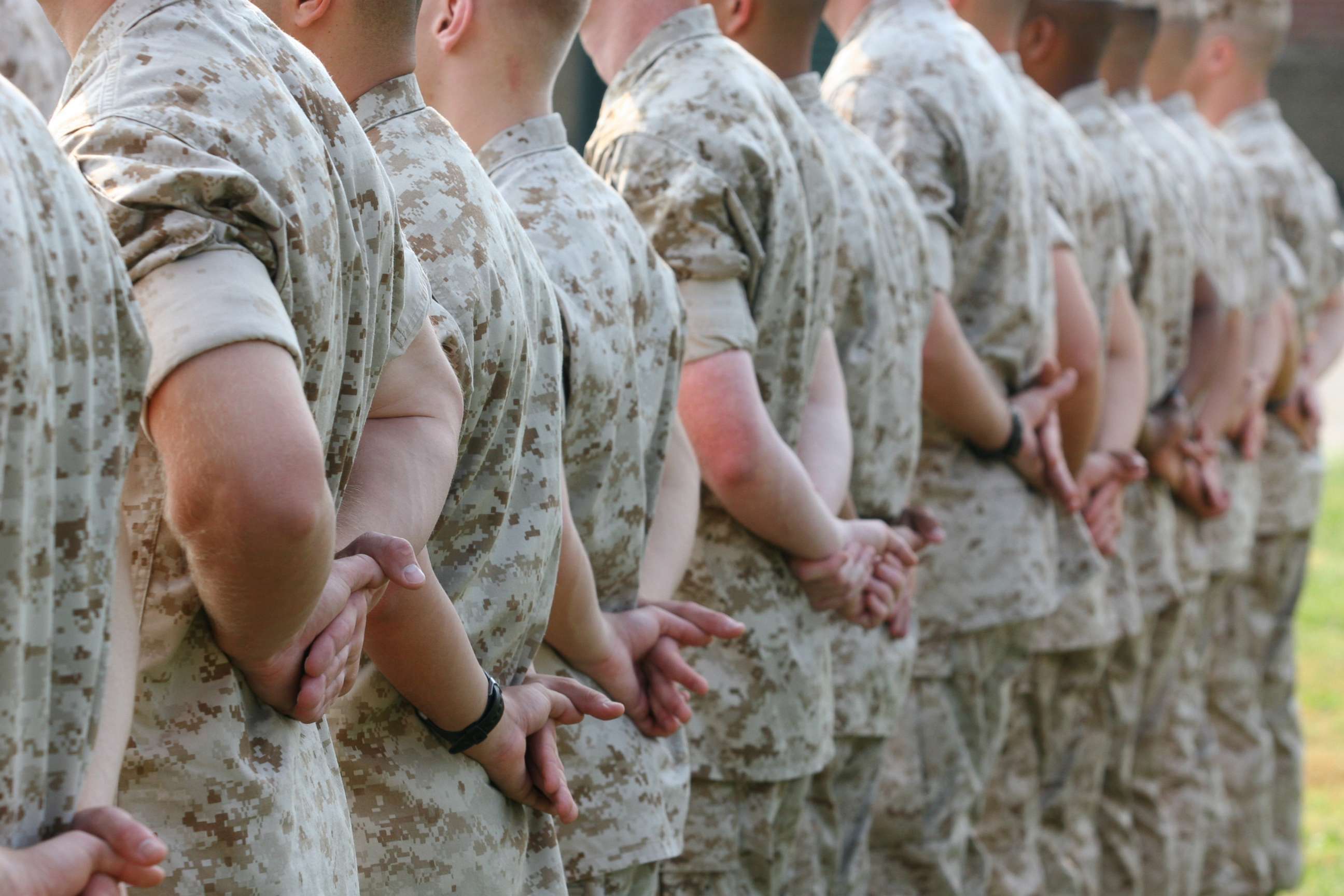Military suicide deaths increase but not seen as linked to COVID-19 pandemic
There were 580 deaths by suicide among service members in 2020.
The Pentagon's annual report on suicides among military service members shows that while the number of deaths by suicide increased slightly from 2019 to 2020, there was no indication that the COVID-19 pandemic led to more deaths by suicide among service members.
The number of deaths by suicide in 2020 increased by 15% from 2019. However, defense officials said the suicide rate for the year was comparable to that seen over the last two years.
"The findings are troubling. Suicide rates among our service members and military families are still too high, and the trends are not going in the right direction," Defense Secretary Lloyd Austin said in a statement. "This is a paramount challenge for our Department. We must redouble our efforts to provide all of our people with the care and the resources they need, to reduce stigmas and barriers to care, and to ensure that our community uses simple safety measures and precautions to reduce the risk of future tragedies."
According to the 2020 Annual Suicide Report, there were 580 suicides among service members last year compared with 504 in 2019, with the Army and Marine Corps showing increases in deaths by suicide while the Navy and Air Force numbers remained stable.
While last year's numbers represent a statistical increase from 2015, defense officials said the suicide rate of 28.7 for 100,000 individuals is statistically comparable to the rates seen in 2019 and 2018 and was within the margin of error.
While Pentagon leaders have expressed concerns about how the COVID-19 pandemic might impact the mental health of military service members, it appears not to have resulted in more deaths by suicide in the ranks.
"We did not see a statistical change in suicide rates between calendar year 2020 and calendar year 2019 that would indicate a COVID-19 related increase," said Maj. Gen. Clement Coward, the acting executive director for the Pentagon's Office of Force Resiliency.
"But that doesn't mean we are standing by when we start talking about the data and what it could indicate. We have always known that COVID and the measures to respond to it have presented unique challenges that would include risk factors for some folks," Coward said. "That's why we're not only continuing to monitor this, but we're also continuing to be relentless to mitigate the efforts as much as we can."

Coward noted that suicide prevention efforts are complex, as there are varying reasons that might lead an individual to death by suicide.
"As the scientific research about suicide prevention continues to evolve, we continue to do everything possible to stop these tragedies," Coward said. "No two individuals are identical, and no two life experiences are identical. So, we are working to address a range of risk factors and enhance protective factors for members of our Armed Forces."
"One of the things that is bedeviling about suicide is that it's often very hard to connect dots in causality -- what leads somebody to make that decision," John Kirby, the Pentagon's top spokesperson told reporters Thursday. "It's difficult to denote specific causality with suicide on an individual basis, let alone on an institutional basis. And I think that's why it's so difficult for us to speak to it with any specificity, except to say we take this very, very seriously."
As in previous years, enlisted males under the age of 30 made up the largest demographic of service members who died by suicide. That demographic makes up 42% of the total U.S. military population but represented 63% of the deaths by suicide in 2020.
"Younger individuals and males tend to have a higher level of impulsivity," said Dr. Karin Orvis, the director of the Defense Suicide Prevention Office, when asked to explain why that population has higher rates of death by suicide.
More than 200 military spouses and dependents died by suicide in 2020, with the rates per 100,000 comparable to those seen in the civilian population when adjusted for age and sex, with the exception of an increasing suicide rate for male spouses.
Firearms were the leading cause of deaths by suicide, and in their release, defense officials cited misconceptions by service members regarding firearms and suicide risk.
According to Orvis, "66% of surveyed active component members held the misconception that suicide risk is not related to how a firearm is stored. As another example, 56% of surveyed active component members held the misconception that that having a firearm in the home does not increase the risk for suicide."
Previous research has indicated that storing a loaded firearm in a home increases the risk of dying by suicide up to four to six times, Orvis said.
"This can be an impulsive act, and you can go from thinking to acting if you have that capability, or that that means within 10 minutes," she said.
Orvis said efforts have been put in place to mitigate that risk, including providing information about safely storing firearms and medications and targeting young populations to help them address "everyday life challenges before they spiral into something potentially greater."
If you or a loved one is experiencing suicidal thoughts, The National Suicide Prevention Lifeline provides 24/7, free and confidential support. Call 1-800-273-8255 for help.




